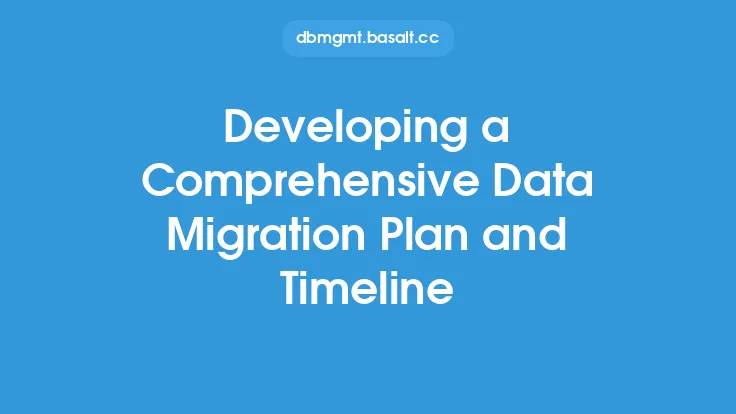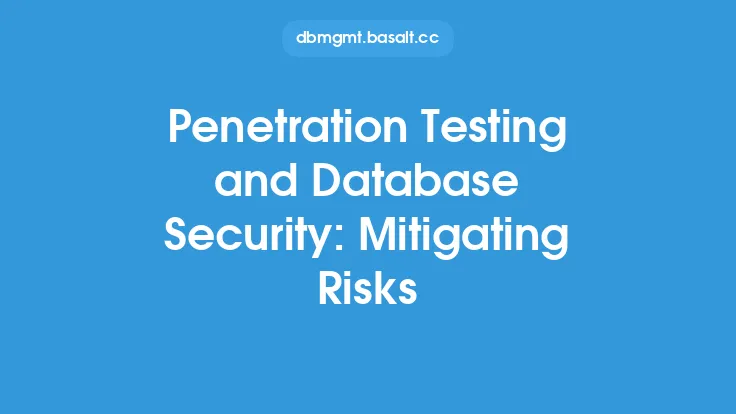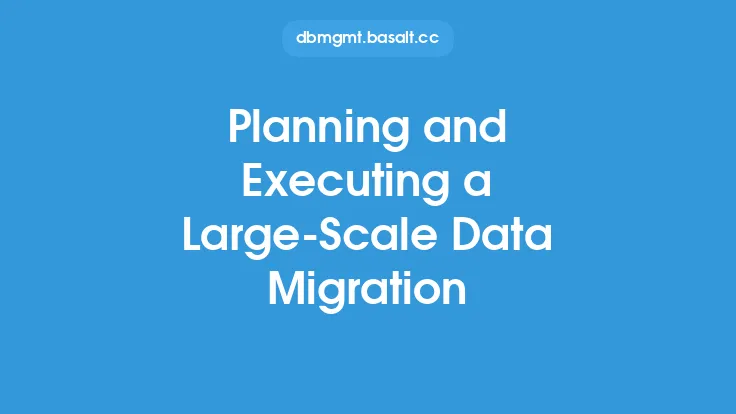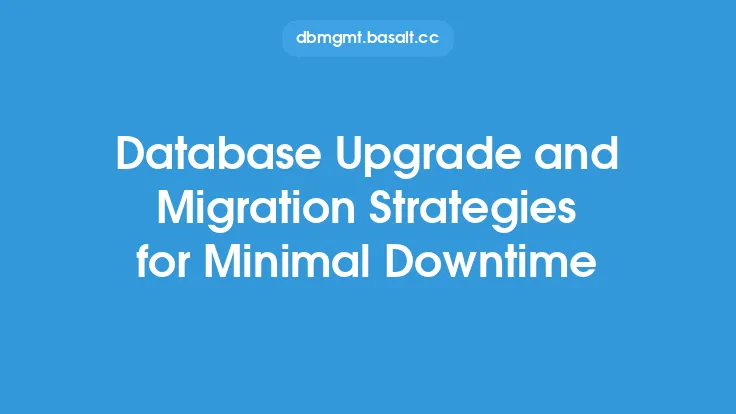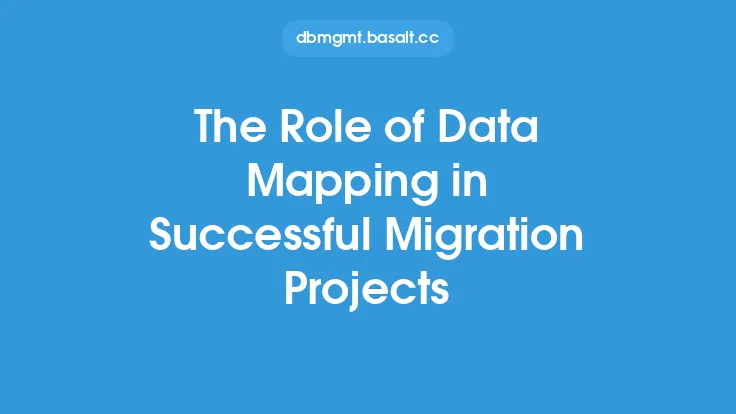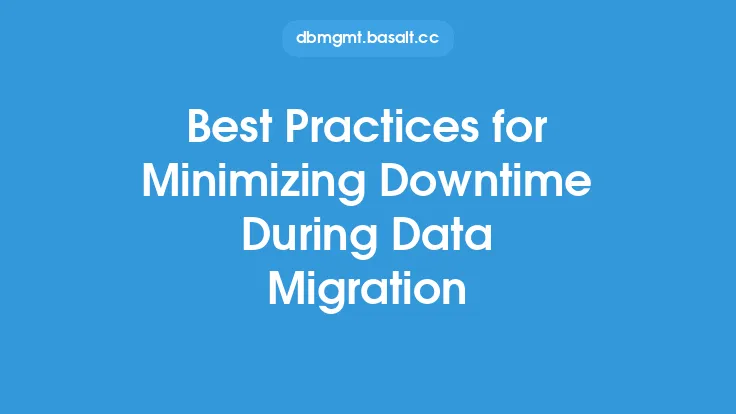When undertaking a data migration initiative, one of the most critical aspects to consider is the assessment and mitigation of risks. Data migration involves the transfer of data from one system, format, or storage device to another, and it can be a complex and error-prone process. If not properly managed, data migration can result in data loss, corruption, or inconsistencies, which can have significant consequences for an organization. In this article, we will delve into the importance of assessing and mitigating risks in data migration initiatives and provide guidance on how to do so effectively.
Understanding Data Migration Risks
Data migration risks can be categorized into several types, including technical, operational, and business risks. Technical risks include issues related to data format, data quality, and system compatibility. Operational risks include issues related to data transfer, data validation, and data verification. Business risks include issues related to data security, data privacy, and data compliance. It is essential to identify and assess these risks to develop effective mitigation strategies.
Identifying Potential Risks
To identify potential risks, organizations should conduct a thorough risk assessment. This involves analyzing the data migration process, identifying potential vulnerabilities, and evaluating the likelihood and impact of each risk. The risk assessment should consider factors such as data complexity, data volume, system dependencies, and regulatory requirements. It is also essential to involve stakeholders from various departments, including IT, business, and compliance, to ensure that all potential risks are identified and addressed.
Assessing Data Quality Risks
Data quality risks are a significant concern in data migration initiatives. Poor data quality can result in inaccurate or incomplete data, which can have serious consequences for business decision-making and operations. To assess data quality risks, organizations should evaluate the data's accuracy, completeness, consistency, and validity. This can be done by conducting data profiling, data validation, and data verification. Data profiling involves analyzing the data's structure, content, and relationships to identify potential issues. Data validation involves checking the data against predefined rules and constraints to ensure its accuracy and consistency. Data verification involves verifying the data against external sources to ensure its validity.
Evaluating System Compatibility Risks
System compatibility risks are another critical concern in data migration initiatives. Incompatible systems can result in data loss, corruption, or inconsistencies during the migration process. To evaluate system compatibility risks, organizations should assess the compatibility of the source and target systems, including their hardware, software, and network infrastructure. This can be done by conducting system testing, system validation, and system verification. System testing involves testing the systems' functionality and performance to identify potential issues. System validation involves validating the systems' configuration and settings to ensure their compatibility. System verification involves verifying the systems' integration and interoperability to ensure seamless data migration.
Developing Mitigation Strategies
Once the risks have been identified and assessed, organizations should develop effective mitigation strategies. Mitigation strategies can include data quality improvement initiatives, system compatibility testing, data validation and verification, and data backup and recovery procedures. Data quality improvement initiatives involve improving the data's accuracy, completeness, and consistency through data cleansing, data standardization, and data normalization. System compatibility testing involves testing the systems' compatibility and interoperability to ensure seamless data migration. Data validation and verification involve checking the data's accuracy and consistency to ensure its validity. Data backup and recovery procedures involve creating backups of the data and developing procedures for recovering the data in case of errors or failures.
Implementing Risk Mitigation Measures
To implement risk mitigation measures, organizations should develop a comprehensive risk mitigation plan. The plan should include the identified risks, the mitigation strategies, and the responsibilities and timelines for implementing the mitigation measures. The plan should also include procedures for monitoring and reviewing the mitigation measures to ensure their effectiveness. It is essential to involve stakeholders from various departments in the development and implementation of the risk mitigation plan to ensure that all potential risks are addressed and mitigated.
Monitoring and Reviewing Risk Mitigation Measures
To ensure the effectiveness of the risk mitigation measures, organizations should continuously monitor and review the measures. This involves tracking the progress of the mitigation measures, identifying and addressing any issues or concerns, and evaluating the overall effectiveness of the measures. The monitoring and review process should involve stakeholders from various departments to ensure that all potential risks are addressed and mitigated. It is also essential to document the monitoring and review process to provide a clear audit trail and to facilitate future improvements.
Best Practices for Risk Assessment and Mitigation
To ensure effective risk assessment and mitigation, organizations should follow best practices. These best practices include conducting thorough risk assessments, developing comprehensive risk mitigation plans, implementing risk mitigation measures, and continuously monitoring and reviewing the measures. Organizations should also involve stakeholders from various departments in the risk assessment and mitigation process to ensure that all potential risks are addressed and mitigated. Additionally, organizations should document the risk assessment and mitigation process to provide a clear audit trail and to facilitate future improvements.
Conclusion
Assessing and mitigating risks in data migration initiatives is critical to ensuring the success and integrity of the migration process. By understanding the potential risks, identifying and assessing the risks, developing mitigation strategies, implementing risk mitigation measures, and monitoring and reviewing the measures, organizations can minimize the risks associated with data migration and ensure a seamless and successful migration. It is essential to involve stakeholders from various departments in the risk assessment and mitigation process and to follow best practices to ensure effective risk assessment and mitigation. By doing so, organizations can protect their data, ensure business continuity, and achieve their migration goals.
